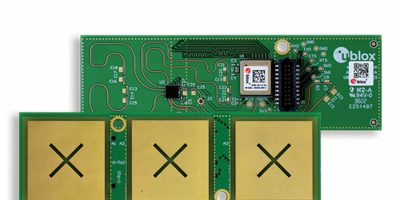Two microcontrollers (MCUs) added to NXP’s portfolio of end-to-end Matter solutions, the RW612 and the K32W148, combine edge processing capabilities with integrated security. The result, said NXP is to streamline development, simplify designs and reduce costs for Matter-enabled smart home devices.
The recently launched Matter standard aims to enable devices from different brands and ecosystems to seamlessly, reliably and securely communicate and thereby free consumers from ecosystem restraints. This allows consumers to select devices based on desired features rather than complex or confusing connectivity requirements. Both the multi-protocol supporting NXP K32W148 and the tri-radio RW612 have native support for Matter, make it easier for developers to integrate the functionality into smart home devices.
The RW612 is believed to be the industry’s first tri-radio wireless MCU with concurrent, multi-protocol support for Wi-Fi 6, Bluetooth Low Energy 5.3 and 802.15.4 and capable of supporting Thread or Zigbee. It is targeted for smart home devices such as thermostats, garage door openers, door locks, IP cameras, robotic vacuums, as well as smart appliances.
The K32W148 wireless MCU offers multi-protocol enablement across Thread, Bluetooth Low Energy 5.3, and Zigbee for devices such as smart plugs, smart lighting and low-power smart devices and sensors. It can add Thread and Zigbee support to home routers, hubs and bridges. Being multi-protocol, it reduces costs and simplifies antenna design with a single antenna.
The RW612 leverages an integrated tri-radio and advanced edge processing capabilities from the EdgeVerse i.MX RT crossover MCU family. It features an Arm Cortex-M33 MCU subsystem with TrustZone-M and fully integrated Wi-Fi 6, Bluetooth LE 5.3 and 802.15.4, capable of supporting Thread or Zigbee. It also includes on-chip SRAM and high performance configurable peripherals, including Ethernet, LCD controller and five FlexComm modules to support a variety of serial protocols.
The level of integration reduces design complexity, bill of materials costs and end product size, added NXP. The RW612 is supported by the unified MCUXpresso development environment to reduce time to market.
NXP also offers the RW610, part of the same family of devices, which are ready to support new features such as Bluetooth LE Audio and Auracast broadcast audio for audio-focused applications, including portable audio devices and speakers, home theatre systems and gaming controllers.
The multi-protocol K32W148 wireless MCU has separated radio and security execution environments to free the main Arm Cortex-M33 core and memory for the customer’s application. The multi-protocol radio supports Matter, Thread, Bluetooth LE 5.3 and Zigbee. It also includes dual-PAN capability to simplify the co-existence of multiple IEEE 802.15.4 networks, such as Thread and Zigbee.
It is also supported by the unified MCUXpresso development environment.
Both the K32W148 and the RW61x wireless MCUs are part of NXP’s EdgeLock Assurance program, which follows a secure-by-design approach, including protection against remote and local software attacks, as well as support for secure boot, secure debug and secure over-the-air firmware updates, with an immutable root-of-trust, hardware accelerated cryptography, and lifecycle management.
The RW612, RW610 and K32W148 are currently sampling.







